Following on from the previous post about our journey through England and Scotland, which took 4 days as there was so much to see – this post is about our 7 days at Aigas looking at wildflowers and gardens in the N.E and N.W of Scotland.
This, as you know from the previous post, is Aigas House where we ate our meals in the baronial hall and had lectures, talks etc.
We all slept in a variety of log cabins in the grounds – this one is ours and there were red squirrels often seen on the trees here.
On our first day here, we were taken to see the “spiked rampion” which grows in the grounds. Almost over when we saw it, the flower spikes must have looked lovely when fully out. Apparantly it only grows in 8 locations in Sussex and at Aigas. Maybe it was introduced in Victorian times as a garden plant, but it doesn’t grow anywhere else in Scotland and is considered very rare.
We then walked to the loch on the estate which is home to a beaver family. These are captive beavers but the area is so huge that the beavers don’t know that they can’t get out.
This dam was made by the beavers on a stream coming into the loch.
There were lots of wild orchids in the woodlands surrounding the loch.
On the wall of the house is this skull of a Minke Whale, almost looks as if it is made of stone.
Next was an outing to Glen Strathfarrar to look for more wildflowers, but we also saw 3 golden eagles and some red deer. This lonesome pine and the mountain behind are used as the logo for Aigas.
Next day, as well as looking for wildflowers on the Black Isle we stopped at Chanonry Point to do some Dolphin watching. We were in luck, a cow and calf were hunting for fish in the bay or maybe the calf was having a hunting lesson. We got super sightings of them.
The sand dunes here were covered with Rosa rugosa – all white – hadn’t realised what a super smell it has!
Traffic islands at Chanonry Point were exquisitely planted with wild flowers and a few garden escapees. This is a beautiful white campion, touched with purple, which contrasted beautifully with the Alchemilla mollis.
Another day we crossed over to the west coast to go garden visiting.
Our first garden was Inverewe on Loch Ewe and we were told before we got there that the Scottish National Trust, who own it, are short of money these days ( like everyone else) so we weren’t to expect too much. Not what I wanted to hear as I have wanted to come here for about 20 yrs, having read so much about it. This carving is of Osgood MacKenzie who made the garden in 1862.
The walled garden is the flagship area of Inverewe and looked very good indeed.
I very soon found the meconopsis and primulas that I love.
This I must try in my woodland, Cardiocrinum giganteum , seen here with Rogersias.
A beautiful planting of more Rogersias – super coloured flowers – another to look for when I get home.
Now down in the walled garden, which is mainly vegetables, but with this super herbacious border running along the back wall, which faces south in a curve which follows the curve of the bay. My verdict on the state of the garden – a lot better than we had been led to believe – maybe a bit tired in areas far away from the house and walled garden, but after all this is woodland planting so shouldn’t be pristine like the walled garden.
Our next garden was at the House of Gruinard on Gruinard Bay where we parked in a lay-by and walked down a hill with a stream to reach it. Apparantly we didn’t use the drive because there was a ringed plover sitting on eggs on the drive – she hadn’t chosen a good spot to make her nest! All of a sudden the stream had the most wonderful planting -not unusual plants – but put together so beautifully. This is our ranger guide, Elspeth, but I think she is more interested in trying to spot white tailed sea eagles which nest on the island in the background!
The front lawn at House of Gruinard, covered in ox-eye daisies -beautiful!
Super planting in the garden “proper” which slopes up the hillside.
Lovely planting with contrasting foliage.
Our next garden was at Dundonnell House, home of Lady Rice, former wife of Tim Rice.This is a mosaic which she had made on the terrace, lovely.
We were greeted with this beautiful blue and yellow planting as soon as we stepped into the garden.
View to the house through the Japanese garden.The bamboo archway frames the view nicely.
Gorgeous planting with orchids.
The next day we went to see the gardens at Atterdale House near the Kyle of Lochalsh, the first part of the garden that you see is a streamside beautifully planted with more gorgeous primulas and other bog plants.
The garden is also home to various super sculptures like this fantastic cheetah,
and this wild boar,
and on the terrace they have this huge sundial.
The view over the house and beyond is breathtaking from the upper walk near the woods.
How about this for a view while we stopped for lunch before returning to Aigas. A Hen Harrier passed over while we were having lunch – fantastic!
Next day we were taken round the Aigas garden by the owner, Lady Lucy Lister-Kaye. The gardens have been her own personal project for the last 20 yrs – she is also a cordon-bleu cook – no wonder our meals are so good.As if that was not enough Lady Lucy is the organiser for the whole of N.Scotland and the Islands for the National Garden Scheme!
Found a few meconopsis at the back.
And this gorgeous primula but no-one knew what its name is, such a lovely colour.Any ideas anyone?
In the afternoon we went to Abriachan nursery and garden at the side of Loch Ness -no we didn’t see the monster, that particular bit of wildlife was not showing itself !! Elspeth was very taken with this orchid.
More meconopsis – this one is Slieve Donnard and yes, I bought one in the nursery, more to propogate in the future!!
Our last garden was Coiltie garden which is high above the village of Drumnadrochit.
From the Coiltie garden you can see this waterfall. Apparantly Charles Kingsley, who wrote the book ” The Water Babies” used to stay in the house next door and he used to climb & sit beside the waterfall which was his inspiration for the book.
Our last day, looking for more wild flowers. Just further on from here, which was our lunch stop, in Easter Ross, we had a super view of Ospreys on their nest with 2 chicks, much better views than at Loch Garten on our way up.
We found a few rare wild flowers but also heard crossbills calling, we tried but couldn’t see them.
Stopped at an inlet to the bay and found this baby common seal just below the jetty we were on, Mum nowhere to be seen, so hope they eventually got back together.
Masses of Orchids on the sand dunes, fantastic sight.
At Aigas in the baronial hall for our last dinner together.There were just 5 of us on our garden and wildflower course, which was nice, the other 14 were on the wildlife course. I think we saw almost as much wildlife as they did, so we had the best of both worlds.
Now on our way back home and the last garden we stopped at was Cluny House Gardens near Aberfeldy where the first thing we spotted were 2 red squirrels. The garden had these lovely white meconopsis in amongst the blue.
And yet more lovely primulas.
We stayed overnight at a super B&B near Carlisle and this was the view from our breakfast table over the large pond complete with mallard and moorhens.
After this we headed on south staying with friends on the way and eventually returned home for a good rest!!!




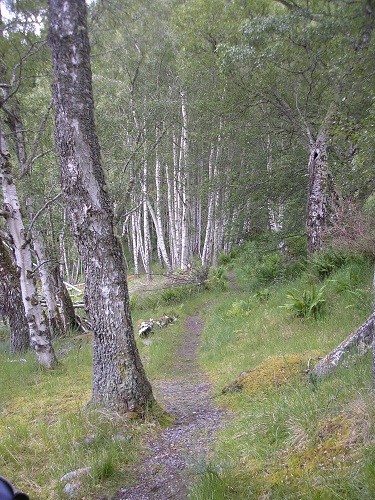

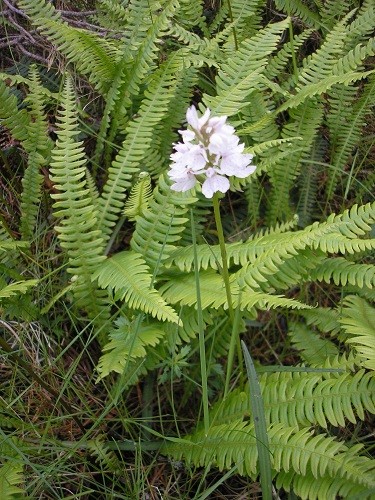
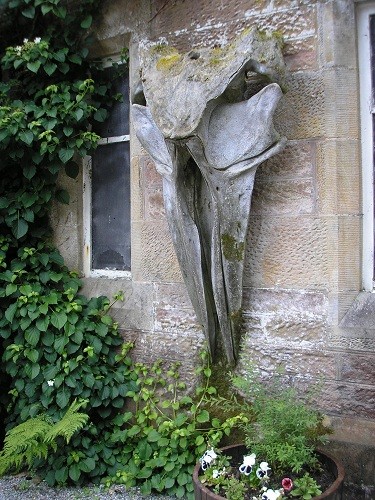

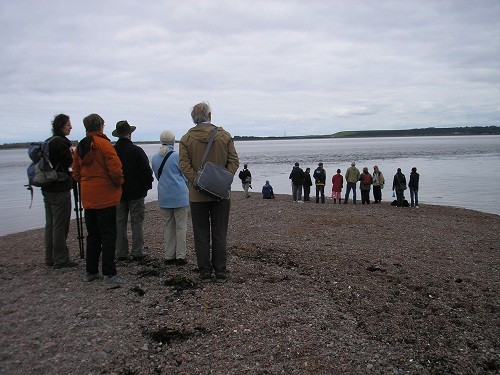

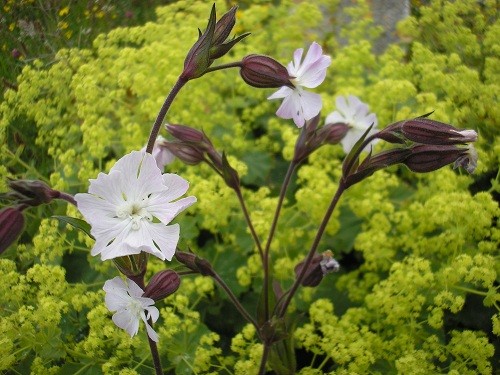

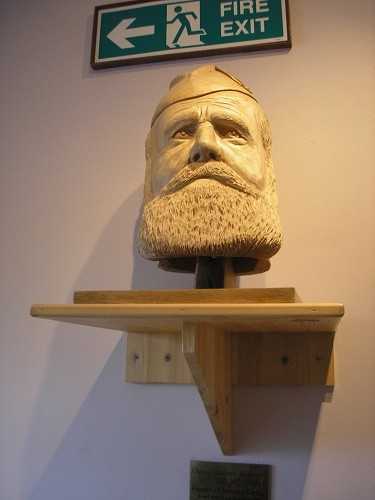
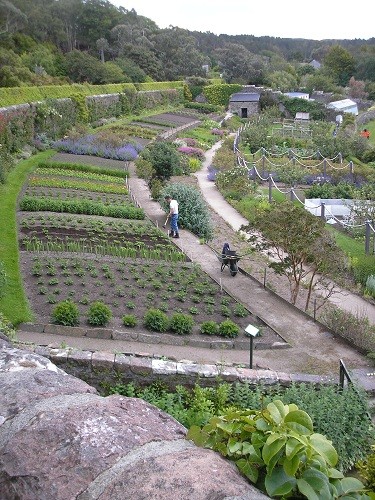



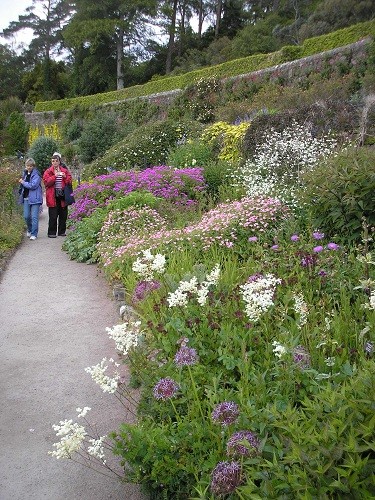
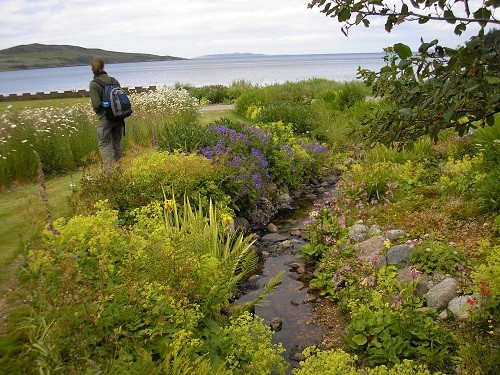

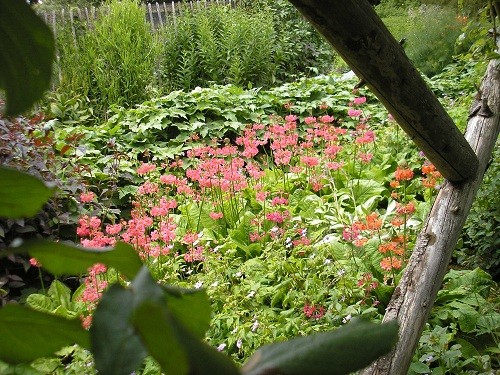




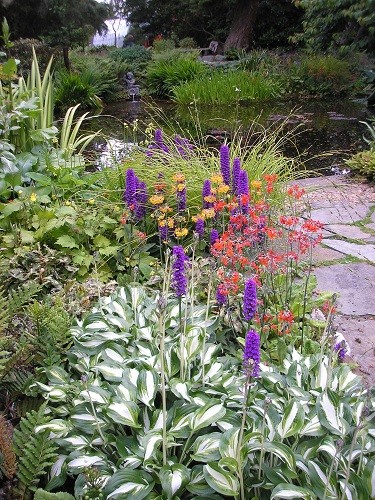
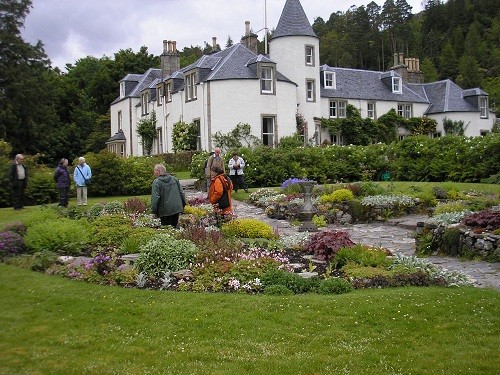









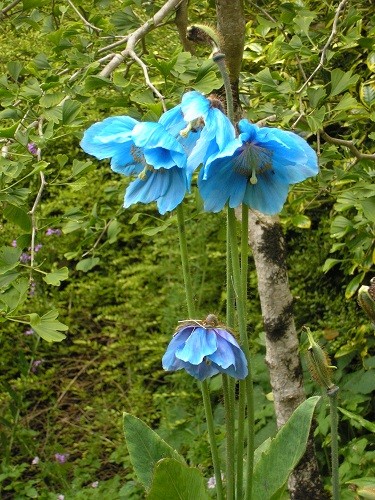


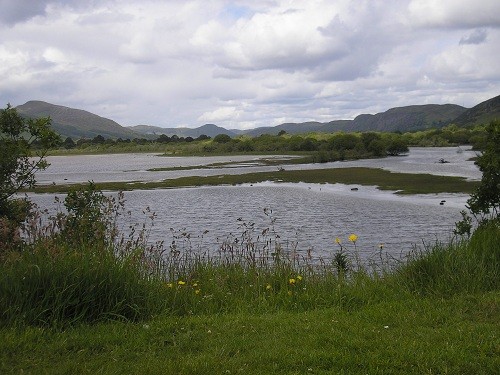
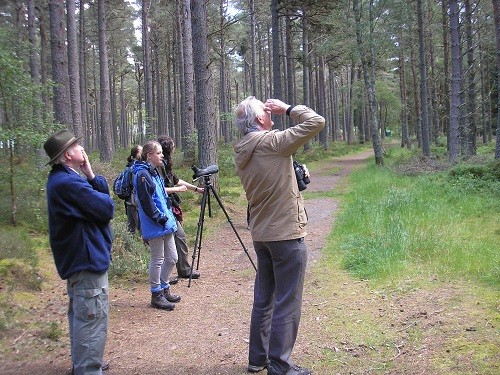





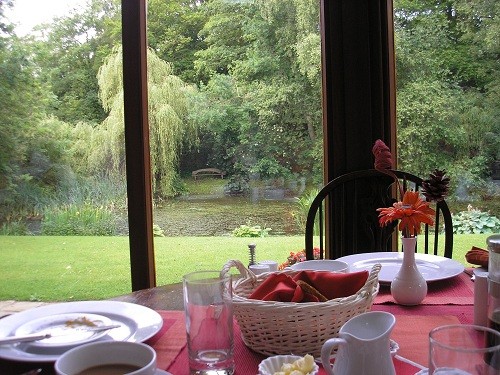
I have been sooo enjoying your holiday, lots and lots of lovely photos for me to drool over. Got a laugh when I saw your log cabin, looks like it could be quite at home in Canada.
Glad you enjoyed the photos Deborah, we really enjoyed our time up there. The log cabins were very comfy, just what we needed for sleeping after a day out garden visiting !
so glad I clicked through to your blog Pauline, I’ve spent so much time in the garden with the dry weather and very light nights I’ve not done much blog reading, when I had the car I used to take the Tarbert – Uig ferry and drive through Kyle of Lochalsh I love that route, past the 5 sisiters and then down past Fort William and over Rannoch moor, sounds like a wonderful course, thanks for sharing,
the mother would have returned to the baby seal she would have been fishing for food, a problem is people see the baby alone and think it’s abandoned so try to help it, this is disastrous as the mother will somtimes reject the baby because of the human intervention, the authorities keep trying to make the public aware of this and keep informing people not to go near a lone baby seal but keep well away so the mother can return, Frances
Lovely part of the world, and right on your doorstep, lucky you Frances! It was wonderful being able to see gardens that are not often open to the public.We were up on a jetty when we saw the seal pup, which was down below on the sand. We didn’t stay very long, just long enough to take its photo, just in case Mum wanted to return, but couldn’t see her keeping an eye on us.